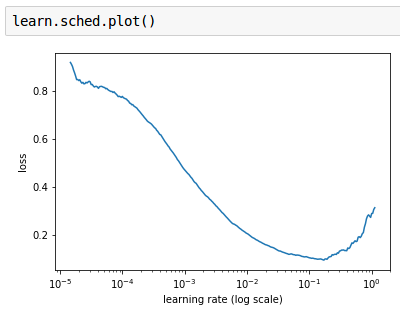Hello,
I have difficulties in understanding how lr.find() works and what lr.sched.plot_lr() is useful for and why the LR is decreasing with respect to the iterations number.
We have almost 23.000 training images. The batch size is 64. So we have 23000/64 ~ 360 batches.
In order to train/find the best LR, we run the training process for each single batch.
When we call lrf=learn.lr_find() we have this type of answer
…
A Jupyter Widget
82%|████████▏ | 295/360 [00:01<00:00, 153.04it/s, loss=0.383]
…
The widget is telling that after 294 batches he found the minimum loss 0.383.
Calling this function learn.sched.plot_lr() we can actually see how the LR performs with respect to the iterations. And x goes only until 300, because the lr_find() stopped at 295.
Q1/ So, why LR(iteration=100) << LR(iteration 295)

The purpose of this function learn.sched.plot() is very clear. We have tried different LRs, for each of them we computed the loss, and we plot the result in order to choose the LR where the loss is decreasing.

Q2/ Why we can’t use the lr_find() for an already trained model learn.fit(0.01,1)?
We have a trained model, with the computed weights - which has an accuracy of 98%, and a training loss of 0.03 and a validation loss of 0.02.
Given this model after the first iteration it stops. Why it doesn’t try to find a better LR in order to obtain an even smaller loss?
learn.lr_find()
Epoch
0% 0/1 [00:00<?, ?it/s]
0%| | 1/360 [00:00<01:27, 4.09it/s, loss=0.0318]
Thank you in advance for the patience of reading and answering to this post.